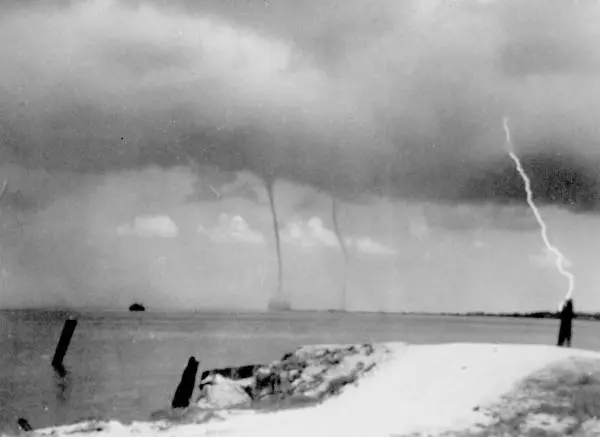How To Survive A Thunderstorm: The Myths (Part 3 of 4)
I’ve already discussed the basics of thunderstorms and how to predict them, but now we’ll discuss something important: the most common myths and misconceptions surrounding lightning.
Unfortunately, searching the internet for information on how to correctly behave during a thunderstorm can lead you to some dangerously misinformed conclusions (because the internet is full of manipulators and liars – perfect example).
When it comes to lightning and how to not die from it, this misinformation can be life-threatening (yes, even just reading it).
I can hear you scoffing at the preposterous idea that you have somehow been led to believe not truths, but I found myself surprised at some of the most common myths surrounding lightning trying-not-to-die procedures.
So do you really know as much as you think you do?

Lightning Myths
- Metal structures or metal on the body (cell phones, watches, jewelry, electronics, etc.), attract lightning.
According to the NOAA (National Oceanic and Atmospheric Administration), “Height, pointy shape, and isolation are the dominant factors controlling where a lightning bolt will strike.” Metal being present has zero effect on whether or not something gets struck by lightning. On the other hand, metal does conduct electricity so you could be electrocuted by a metal fence or railing that gets struck.
- As long as it’s not raining and there aren’t clouds above you, you’re safe from lightning strikes.
This is not true. Lightning can strike as far as 10-15 mi / 16-24 km away from a storm. If you’re seeing lightning, then chances are it’s time to start looking for shelter.
- If someone gets struck by lightning, they are electrified, and touching them will electrocute you.
The human body conducts electricity, but it does not store it. If you are touching another person when they get struck, then you will also be electrified, but touching them after they’re hit will not harm you. Administer CPR as soon as possible (but only if they’re not breathing).
- Lightning never strikes the same place twice.
This is one of those things that everyone’s heard, but that is really easy to disprove if you take the time to think about it. Of course, lightning can strike the same place twice – just imagine a building’s lightning rod. If lightning was only going to strike a lightning rod once, then it would be silly to have it in the first place. There is no magical force of nature preventing lightning from striking the same place twice. Be afraid.

LIGHTNING FACT: Lightning is 54,000°F / 30,000°C. That’s three times hotter than the surface of the sun. Despite this ridiculous temperature, serious burns aren’t common since the current “flashes over” the victim.
- Golfers are the most likely candidates for death by lightning.
According to an eight-year study conducted by the NOAA between 2006 and 2013, it was boaters, not golfers, who were most likely to be struck and killed by lightning. The figures from the study show that fishermen were three times more likely to be killed by lightning strikes than golfers. Soccer, farming/ranching, and yard work all saw more fatalities than golf (which had a total of eight deaths). (Source)
- Wearing rubber shoes can make you immune to lightning strikes.
Rubber-soled shoes (and rubber tires) do not give you any protection from lightning (you are safe inside a car because of its metal frame, not because of the rubber tires somehow insulating you).
- You are safe indoors during a thunderstorm.
So, remember how there’s no safe place outdoors? Well, it turns out that indoors isn’t entirely safe either. If you are inside, you can still be struck by lightning if you are in contact with something that conducts electricity. This includes landline phones, appliances, cables, plumbing, and metal doors or windows. Lightning (in rare instances) can even enter a home via cracks in windows (basically, you need to go to your panic room).
- There are measures you can take to make yourself safe outdoors during a thunderstorm.
I will repeat this again, and if you look elsewhere (like the NOAA website) you will see it over and over, but there is no safe place outdoors during a lightning storm. Really the steps to staying safe in a lightning storm are: 1) get inside, 2) if you can’t get inside then really try hard to get inside, 3) if that doesn’t work then, all kidding aside, get inside. Not very helpful in the backcountry is it?
So, how did you do?
Have anything else that you think needs to be added here?
Next, we’ll look at what to do when you get your ass stuck in a storm and have no way of getting to shelter (you irresponsible bastard).
How To Survive A Thunderstorm: What To Do (Part 4 of 4)







I just got rick rolled
The internet tis a silly place
Eagerly anticipating your next part. #2 might need a read through…
Don’t forget about #1!
https://www.halfwayanywhere.com/trails/how-to-survive-thunderstorm-basics/